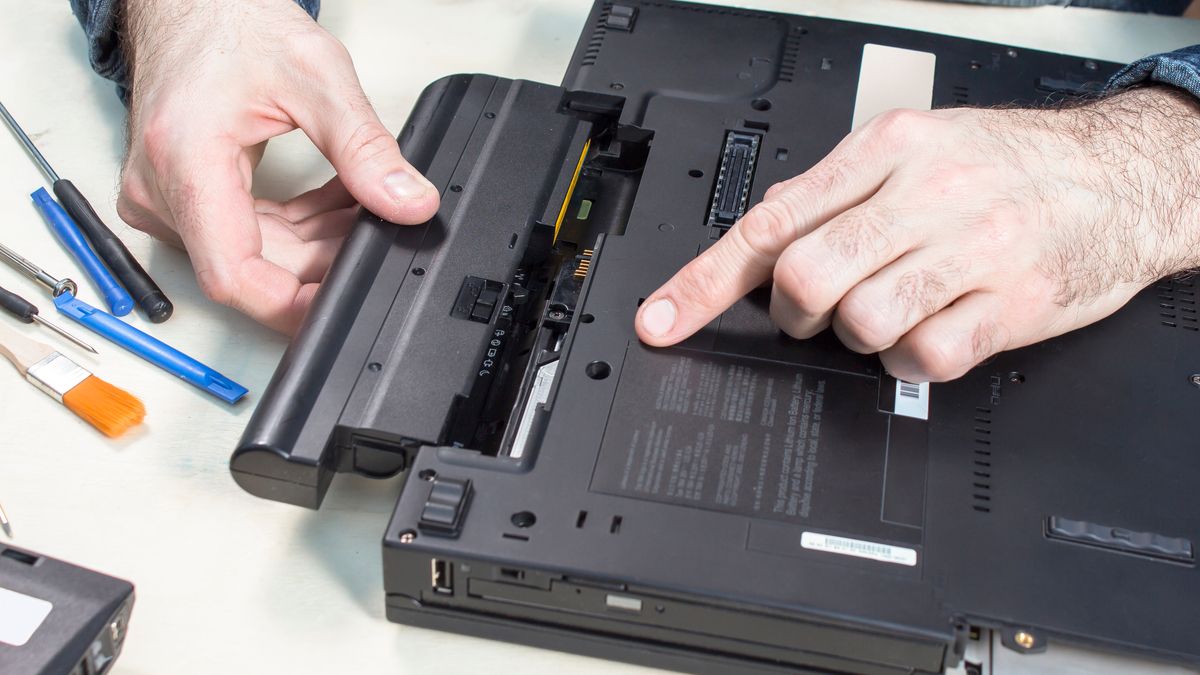Key Takeaways
- The display on a laptop can crack if exposed to extremely cold temperatures.
- Batteries are sensitive to cold temperatures and can experience reduced capacity, increased resistance to charging, and even permanent damage.
- Rapid temperature swings can create condensation inside a laptop, which can lead to water damage and short-circuits.
We often hear about computers overheating, but what happens if they get too cold? Laptops can get pretty toasty and might even start to lag as they operate, so it’d make sense to place them somewhere chilly to keep them cool, right? Maybe not!
The Display Can Freeze and Crack
Your primary concern when your laptop gets exposed to freezing cold is that the display will break. Modern laptops typically have some type of Liquid Crystal Display (LCD). As their name implies, LCDs use a layer of liquid crystal to display an image.
LCDs have an operating range between 0°C (32°F) and 50°C (122°F), with the storage range being slightly wider. As the screen gets colder, it becomes more unresponsive because the molecules inside the LCD move slower. It starts lagging, and you might even notice ghosting. This isn’t permanent, though, as the screen’s responsiveness will return when you take it back into a warm area.
However, if the LCD gets very cold, e.g., below -20°C (68°F), the liquid inside the display can literally freeze. If that happens, it’ll expand and put pressure on the other layers inside the display. This can lead to various types of permanent damage, such as discoloration, uneven backlight, and even complete cracks in the display.
If you have a fancier laptop with an OLED screen, the same general principles apply. While OLEDs are slightly more resistant to cold weather, they can also become unresponsive as temperatures drop and can get permanently damaged if temperatures dip below -20°C (68°F).
The Batteries Can Be Permanently Damaged
Batteries are arguably even more susceptible to temperature swings than displays. There’s a good reason why modern EVs have heaters to keep the batteries warm—Lithium-ion batteries don’t handle cold temperatures very well. Their operating temperature is between -10°C (14°F) and +50°C (122°F), though they start dropping voltage and have reduced capacity as they get colder, even at temperatures above freezing.
However, you shouldn’t try to charge the battery if the temperature is below freezing, i.e., below 0°C (32°F). Cold weather increases a battery’s resistance through a process called “lithium plating,” meaning it’s harder to charge and requires more power, which is bad for your battery’s lifespan. If we’re talking about permanent damage caused by extreme cold, the battery can permanently lose capacity due to irreversible chemical reactions.
If the battery gets extremely cold, and you heat it up rapidly or bring it into a warm area, the battery can rapidly expand and even explode.
The Circuitry Can Handle Extreme Cold, However…
Condensation can kill your laptop. Just like how rapid temperature swings can cause the battery to expand and contract, when the air inside your laptop gets very cold or very hot fast, the water vapor in the air condenses. The vapor will accumulate inside your laptop in the form of dew, and water and electronics don’t mix well. If water gets inside the laptop, the worst-case scenario is that the motherboard or CPU/GPU short-circuits and dies.
Normally, the air inside your laptop is the same as the air outside it, thanks to the vents and fans. That’s why it’s not the cold necessarily that causes condensation but rather the fast temperature change.
Avoid the Cold to Make Your Laptop Last
Prevention is better than cure, so avoid exposing your laptop to extreme temperatures whenever possible. For instance, don’t leave your laptop in your car when temperatures drop below freezing. If you need to carry your laptop in cold weather, consider getting an insulated laptop bag, preferably one that’s also waterproof in the case of snow or rain.
Also, avoid extreme temperature swings. If your laptop spends some time in the cold, don’t take it straight into a warm room; instead, leave it in the coldest place of your house for 30 minutes to an hour to prevent condensation.
If your job entails working outdoors in freezing temperatures, an average consumer laptop simply won’t cut it. You need a rugged laptop designed to handle rough weather and environments, thanks to its thick protective shell. A great example is the Dell Latitude 5424. It even has a built-in handle for easier carrying.


